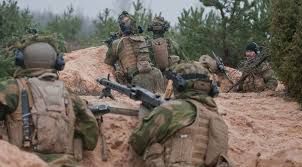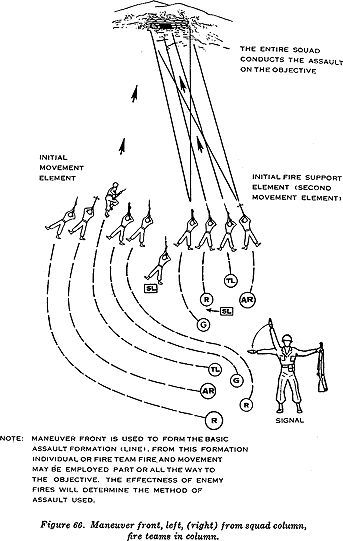
On June 1, Ukraine conducted a successful operation targeting Russian strategic bombers and other aircraft.
Our battle damage assessment can confirm the following losses: 12 destroyed and 3 damaged aircraft, of which 14 are strategic bombers and 1 is a transport aircraft. 1/
05.06.2025 17:22 — 👍 119 🔁 31 💬 3 📌 3

Russia is developing its military infrastructure and conducting organizational reforms near Nato’s northern flank, especially near Finland. News agencies from different countries have asked me about the topic, and in this thread I will share some recent observations. 1/
02.05.2025 17:29 — 👍 213 🔁 62 💬 11 📌 8

We have updated the map to reflect the emerging situation in the Kursk salient, where recent Russian offensive have forced the Ukrainians to withdraw from large areas.
The northern part of the salient has been abandoned, with Russians capturing Malaya Lokanaya.
1/
09.03.2025 16:10 — 👍 145 🔁 33 💬 4 📌 5
The mild weather has led to ground conditions becoming soft. This greatly limits off-road traverse further complicating withdrawal.
The Ukrainians will likely attempt to delay the Russian advance with rearguard battles to secure a large scale withdrawal from the salient.
6/6
09.03.2025 16:10 — 👍 47 🔁 4 💬 0 📌 0
The Russian advance on Wednesday and Thursday has likely denied the use of a Secondary Supply Route west of Kurilovka to the Ukrainians.
Meanwhile the Main Supply Route from Sumy to Sudzha is under Russian drone surveillance making traverse extremely dangerous.
5/
09.03.2025 16:10 — 👍 33 🔁 2 💬 1 📌 0

Currently the situation in the salient is extremely difficult. Ukrainian defense is currently being established around Kasachya Lochnaya and Sudzha.
Multiple bridges in the area have been destroyed, leaving some Ukrainian defenders with rivers behind their backs.
4/
09.03.2025 16:10 — 👍 34 🔁 4 💬 2 📌 0
Russian actions throughout the area of operations seem coordinated, further reinforcing the assessment that instead of reacting to a sudden Ukrainian withdrawal, the Russians have the initiative and are forcing the Ukrainians to react to their operations.
3/
09.03.2025 16:10 — 👍 32 🔁 3 💬 1 📌 0
According to Russian sources the Ukrainians had rotated some units out of the salient earlier. It's possible that the Ukrainians were preparing for larger withdrawals.
Recent Russian operations may have started as an pre-emptive attempt to disrupt any Ukrainian withdrawal.
2/
09.03.2025 16:10 — 👍 34 🔁 3 💬 2 📌 0

We have updated the map to reflect the emerging situation in the Kursk salient, where recent Russian offensive have forced the Ukrainians to withdraw from large areas.
The northern part of the salient has been abandoned, with Russians capturing Malaya Lokanaya.
1/
09.03.2025 16:10 — 👍 145 🔁 33 💬 4 📌 5

Ukraine has carried out a series of counterattacks in several directions, especially southeast of Pokrovsk. They have entered Pishchane, but currently it's unclear if they have fully retaken the village.
At the same time, the Russians are still attacking in the area too. 1/
10.02.2025 17:16 — 👍 144 🔁 23 💬 3 📌 2

After six months of combat in the Kursk salient, the Ukrainians launched another attack in the southeastern direction of Sudzha. The Ukrainians seemingly breached the first Russian defences, and an armored column managed to advance up to 5-7 kilometers deep towards Ulanok. 1/
07.02.2025 15:52 — 👍 196 🔁 41 💬 3 📌 2


Even though the Russians were able to capture Velyka Novosilka and secure rest of Kurakhove, the overall pace of Russian advance continued to slow down during January. Russian armed forces were able to conquer 332 square kilometers of Ukraine and regain some 68 sq km in Kursk. 1/
03.02.2025 10:43 — 👍 49 🔁 12 💬 1 📌 1

Vellyka Novosilka and Kurakhove have fallen, and Russians continue their offensive towards Pokrovsk.
In this thread I will examine what is to be expected of the most critical area of the eastern front in the near future, and what can the Russians realistically achieve. 1/
02.02.2025 18:28 — 👍 143 🔁 30 💬 3 📌 5
Our group did a dive into light infantry tactics. There has been much talk about human waves in Ukraine, and the narratives don't always reflect the realities. This thread aims to clarify a few things about this subject.
17.01.2025 08:14 — 👍 69 🔁 12 💬 0 📌 0
That's what we'll be elaborating on in the future!
16.01.2025 23:34 — 👍 2 🔁 0 💬 0 📌 0

Light Infantry Attacks – A Thread
Why does our @jjhelin.bsky.social keep rejecting the "human waves" narrative, instead calling the reported North Korean attacks in Kursk "basic infantry drills"?
Let’s dive into light infantry on the attack and why this distinction matters.
1/
16.01.2025 20:18 — 👍 131 🔁 27 💬 5 📌 10

Black Bird Group will be taking a further look at the North Korean attack tactics soon.
As always our activity is made possible by Jenni and Antti Wihurin Rahasto and their generous grant.
17/17
16.01.2025 20:18 — 👍 41 🔁 3 💬 1 📌 0

Nevertheless the term "human waves" conjures up imagery of reckless, suicidal assaults. What we see in Kursk aligns more with light infantry doctrine. The losses? Heavy, yes. But that's expected when light infantry attacks prepared positions.
16/
16.01.2025 20:18 — 👍 34 🔁 1 💬 3 📌 0

The terrain also restricts infantry maneuver.
However, we see a lack of supporting fires and other fire-support elements. It's unclear why North Koreans don't seem to receive upper-echelon artillery support, although drones seem to be hunting their organic mortars.
15/
16.01.2025 20:18 — 👍 23 🔁 1 💬 1 📌 0

Why does this matter?
Reports of North Korean troops in Kursk often mention “human wave” tactics. This narrative oversimplifies what’s likely happening: They’re employing basic, scalable infantry drills. These are rooted in fire and movement, not mindless rushing.
14/
16.01.2025 20:18 — 👍 48 🔁 3 💬 1 📌 0

Although modern environment differs from the WW2 the infantry fundamentals haven't greatly changed.
Western forces have rarely had to fight in a near-peer environment post-WW2, and have almost always had the superiority of fires and other supporting elements.
13/
16.01.2025 20:18 — 👍 24 🔁 1 💬 1 📌 0


Succesful or unsuccesful, infantry assaults have usually led to high casualties.
Notable examples include Coles Charge at Carentan in 1944 and the Finnish assault at Äyräpää Church in 1940.
Also pictured: Warfare History Network on the Battle of Best, Holland, September 1944
12/
16.01.2025 20:18 — 👍 22 🔁 1 💬 1 📌 0

Light infantry doesn’t operate in isolation.
Success often depends on:
Support from higher-echelon weapons (artillery, mortars, drones).
Coordination with heavier forces (if available).
But when resources are limited, light infantry must rely solely on organic weapons.
11/
16.01.2025 20:18 — 👍 25 🔁 1 💬 1 📌 0

Frontal assaults :These are a last resort, risky and bloody but sometimes necessary if:
There’s no viable flanking route.
Terrain is open
Time is of the essence.
Light infantry attacking prepared positions will likely take heavy losses—it’s the nature of the fight.
10/
16.01.2025 20:18 — 👍 34 🔁 1 💬 1 📌 0

Movement in the attack
When advancing, infantry ideally uses cover and concealment to:
Avoid being seen.
Minimize casualties while closing the distance. Maneuver to the enemy's flank or weak point.
But the terrain and situation don't always allow this.
9/
16.01.2025 20:18 — 👍 27 🔁 1 💬 1 📌 0

Suppressive fire can come from individual soldiers within the assaulting element or a base of fire section. The goal is to pin the enemy down, create openings, and exploit those opportunities.
Without fire and movement, light infantry is just a vulnerable mass of soldiers.
8/
16.01.2025 20:18 — 👍 28 🔁 1 💬 1 📌 0

Fire & Movement explained:
This is the bread and butter of infantry tactics, scaled from individuals to squads:
While one element suppresses the enemy (fire), another advances (movement). “I’m up, they see me, I’m down” – the mantra of infantry advancing under fire.
7/
16.01.2025 20:18 — 👍 28 🔁 1 💬 1 📌 0

How does light infantry operate? Despite technological advancements, basic infantry tactics have changed little since the World Wars.
Units operate in fireteams, squads, platoons, and companies. Core principles: Fire and movement.
6/
16.01.2025 20:18 — 👍 29 🔁 1 💬 1 📌 0

For states with limited resources or for operations where vehicles can't maneuver easily (dense forests, mountains, urban areas), light infantry remains the go-to force.
Its flexibility comes at a cost: higher casualties, especially in frontal assaults.
5/
16.01.2025 20:18 — 👍 33 🔁 1 💬 1 📌 0

Why is light infantry relevant?
Post-Cold War world Western forces are mechanized, but light infantry remains because:
It’s cheap.
Has a smaller logistical footprint (easier to feed/supply).
Can be rapidly deployed.
Offers superior tactical mobility in rough terrain.
4/
16.01.2025 20:18 — 👍 32 🔁 1 💬 1 📌 0
























